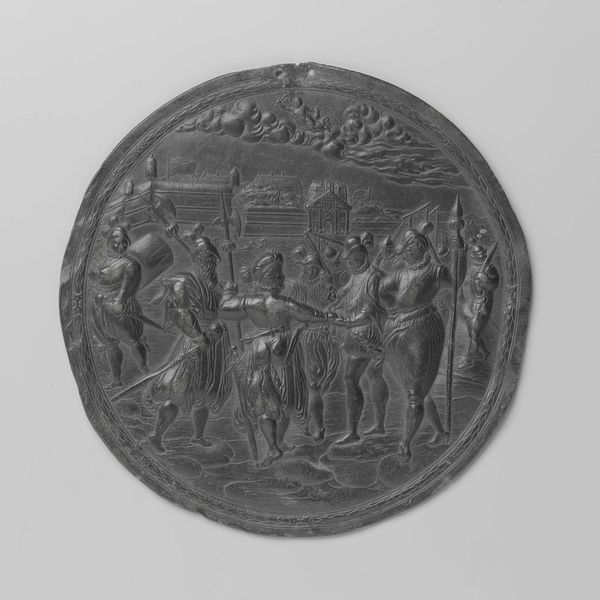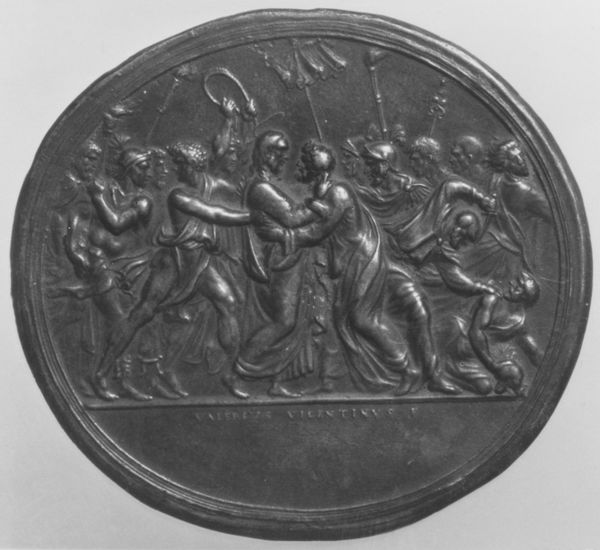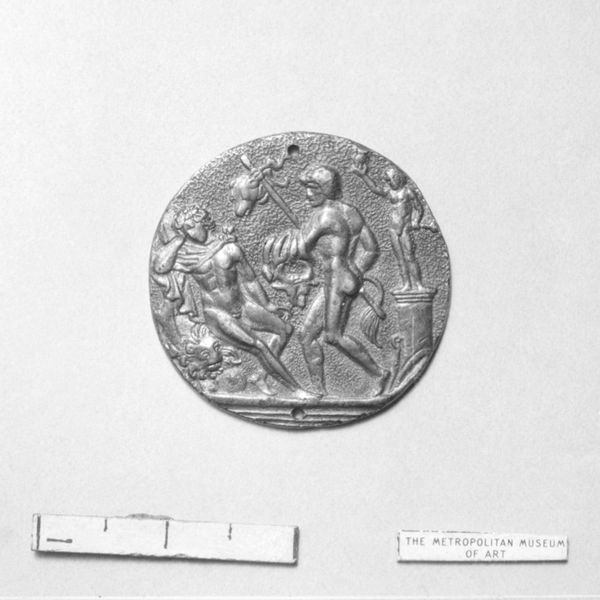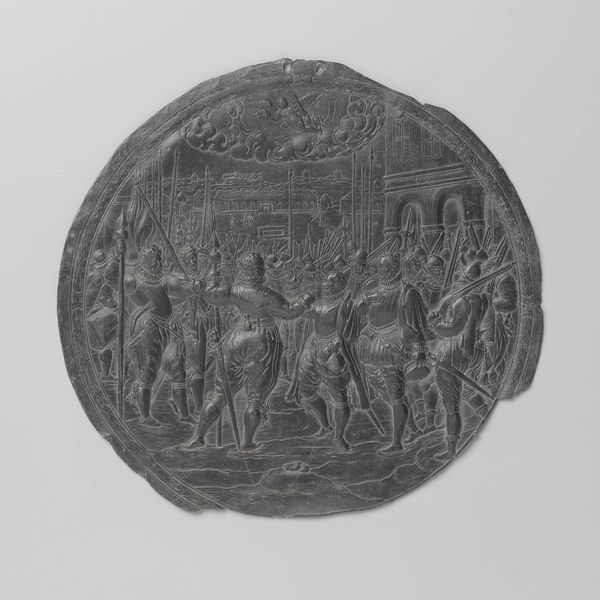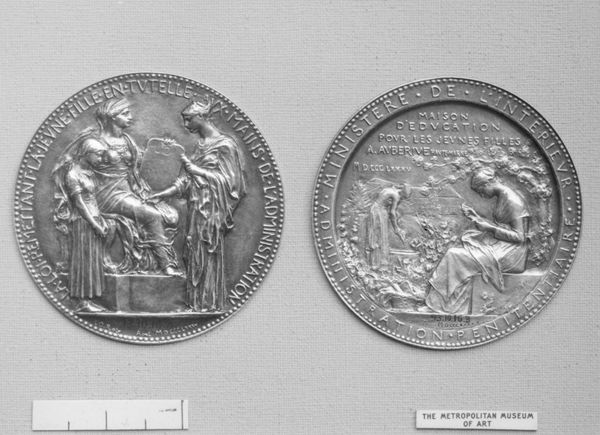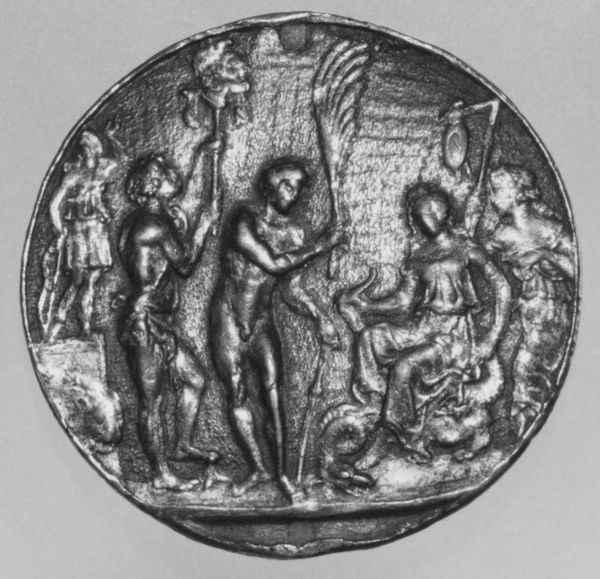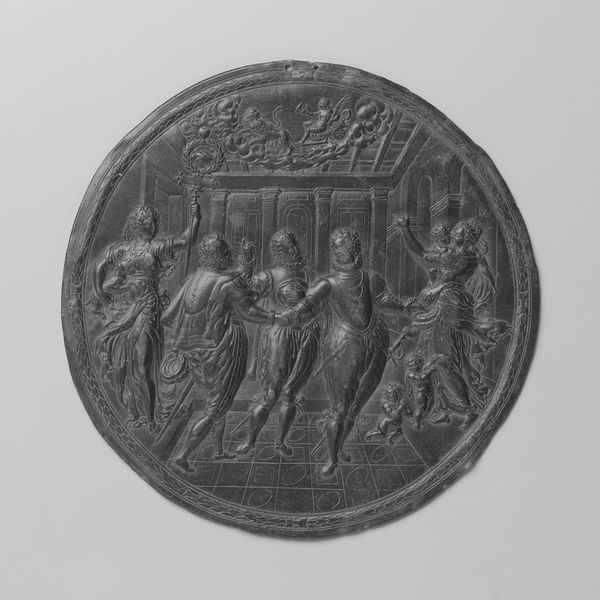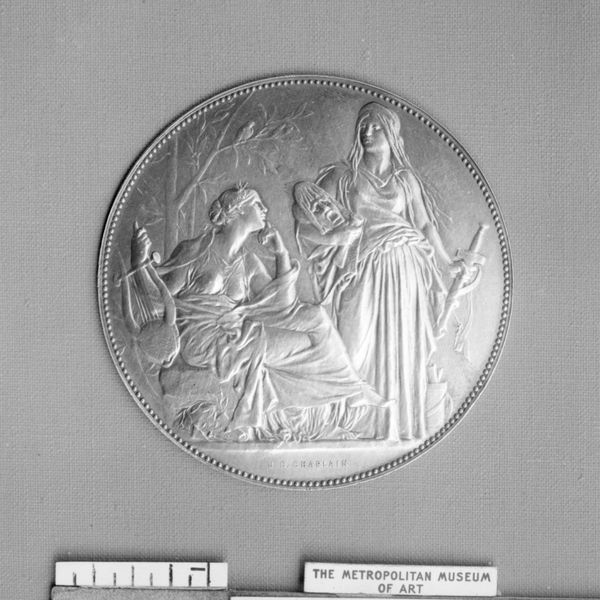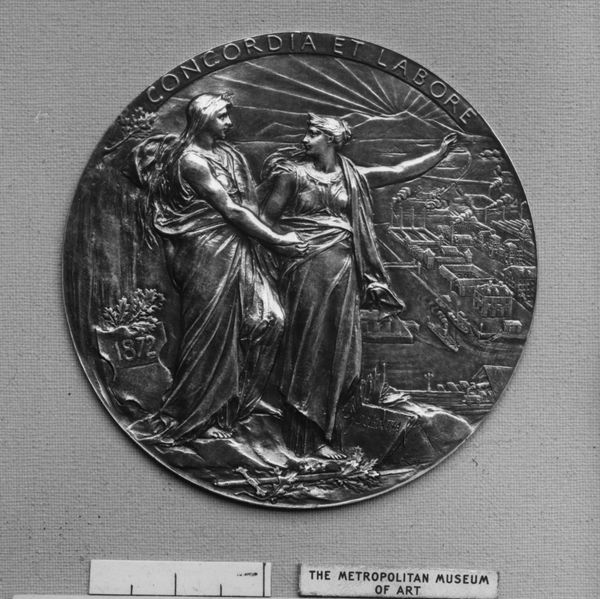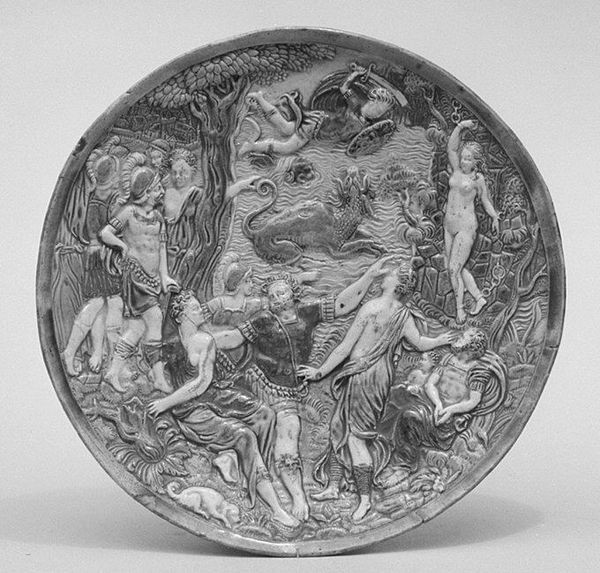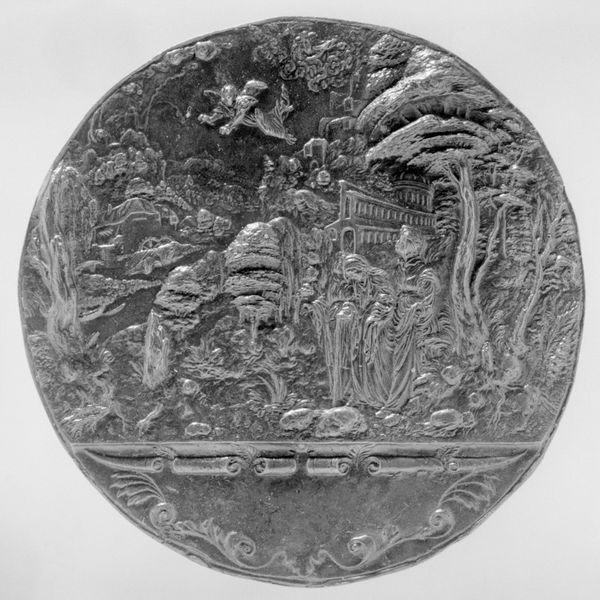
relief, bronze, sculpture
#
medal
#
sculpture
#
relief
#
bronze
#
figuration
#
ancient-mediterranean
#
sculpture
#
history-painting
#
decorative-art
Dimensions: Diameter: 2 3/16 in. (5.6 cm)
Copyright: Public Domain
Curator: This bronze relief, "Ariadne on Naxos," likely created sometime between the 15th and 16th centuries by Master IO. F.F., presents a classical subject rendered in miniature. Its scale almost invites intimate inspection. Editor: It does, though initially the scene appears overwhelmingly male and rather chaotic. A lone female figure anchors the composition, seated while surrounded by a revelry of mostly undressed male figures, a jumble of limbs and celebratory props that seem to box her in. Curator: Precisely. The medal’s subject references the Greek myth of Ariadne, abandoned by Theseus on the island of Naxos, and subsequently discovered, or perhaps rescued, by the god Bacchus, or Dionysus. The surrounding figures are Bacchantes, his entourage. It seems like the moment she’s swept up from isolation into, one assumes, divine matrimony. Editor: But look closer: it feels less like a rescue and more like a symbolic claim of ownership, wouldn’t you say? Her downcast gaze and slumped posture indicate she hasn’t quite consented to being part of this drunken revelry. Is she becoming a prize instead of being liberated? This imagery presents so much potential for exploring themes of consent and agency within classical narratives. Curator: It’s complex. These medals circulated as humanist tokens, celebrating learning and the revival of interest in classical antiquity among elite circles. These objects were status symbols and expressions of refined taste. How the patrons receiving such works interpreted this particular scene surely reflected their worldview and biases. Editor: Yes, and knowing these medals were designed to be held, exchanged, and displayed—usually within wealthy, patriarchal environments—we have to also think about what kind of societal message is being reinforced through these mythological depictions, even passively. Curator: Considering it was created centuries ago, its presence now allows viewers today the possibility to challenge narratives of feminine agency from a contemporary standpoint. It stands testament to our continued engagement with myth and history, filtered, inevitably, through our own lenses. Editor: Definitely. And hopefully prompts necessary conversations about who gets to control these narratives—then, and now.
Comments
No comments
Be the first to comment and join the conversation on the ultimate creative platform.

